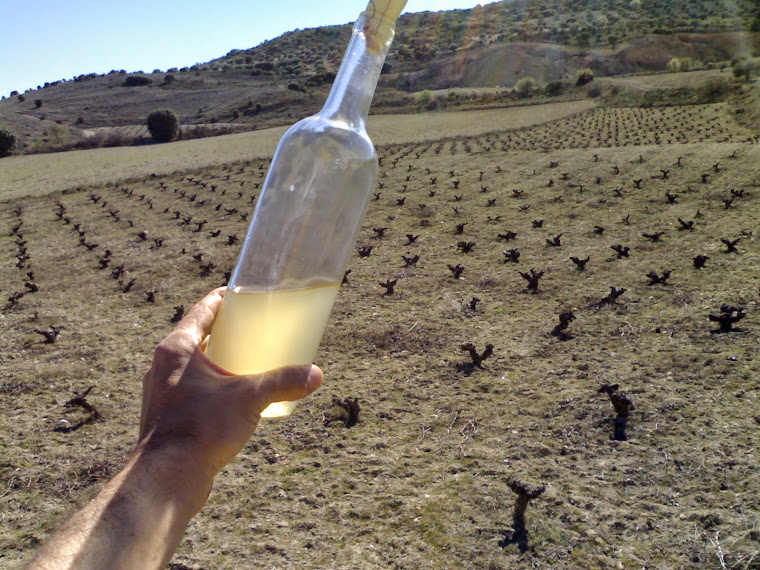Last month (Feb 2013) I had to prepare several pallets of different wines to ship to New York and to California, as quickly as possible. I thought I could do it in a few days, but it was slow, slow work, as I had to do it all by hand, not being the owner of any automatic (or even semi-automatic) labelling machinery!
(For details of the wines shipping out, see this previous post/page).
 |
| Boxes and separators (2) |
Here (above) you can see the actual boxes, all folded up, and behind them, the separators, which have to be placed inside.
 |
| Boxes and separators (2) |
 |
| Boxes ready to go |
Then, turn box the right way up, insert the separators, and the boxes are ready.
 |
| Bottles of wine |
Another shot of the stored bottles (below), also in the barrel room, at 18ºC:
 |
| Stored bottles |
 |
| Labels |
 |
| Front and back label |
 |
| Bottles in the boxes |
 |
| Pallet on which to stack the boxes |
 |
| Quality control at lunch |
 |
| First layer |
My friend Monica came out to help me one day. She’s the export manager for Pago Casa del Blanco, one of the only 13 Pagos in all of Spain (Pagos are at the very top of the Spanish wine quality pyramid - above normal D.O.'s and D.O.Ca's)
 |
| Monica sticking labels |
 |
| Very pretty, but is it art? :) |
Planting a Vineyard in Scotland
What? Are you crazy? Yes, considering the evidence and past history, I suppose I must be! I’ve had this crazy idea in my head for years, but finally this year I managed to do a field trip up north to check out the lie of the land. Mainly, I just wanted to eliminate the possibility of planting a vineyard in Scotland, so I could have one less thing to fret about, but (un)fortunately – depending on which way you look at it – my fretting days are not yet over!
We chose a place, more at less at random, but with a few criteria: close to Glasgow (1 or 2 hrs drive), West Coast (less harsh climate than the east coast!), in a possible micro-climate (clue, near a Botanic Garden, of which there are a surprising amount in Scotland!). So we ended up in town of Inverary.
The first stop was the Oyster bar on Loch Fyne, where they serve fresh local oysters from Loch Fyne :). The presence of this bar had nothing to do with our choice of destination!
Then on to the Botanic Gardens at Crary, where we observed the presence of all sorts of palm trees and other exotic, tropical plants (well, semi-tropical!).
Then back to Inverary itself for lunch, in the George Hotel, for some traditional fare in the form of a pub-lunch. Beautiful building, brilliant beer, but ‘traditional’ Scottish food, ie deep-fried fish and chips – I’d forgotten that it was possible to put much batter on a fish!!!
Anyway, so am I going to plant a vineyard in Scotland? Well, I would certainly like to try! It depends on my circumstances here in Spain! Physically and geographically and climatologically, I think it’s possible. Not easy, but possible. The only thing that worries me is why no-one else has thought of this already!!! You know what I mean? Every time you think you have an original bright idea, you search on Google, and a gazillion hits come up!!! But (worryingly), I could only find one (1) vineyard already planted in Scotland. Here: link. Sorry, I don't have any photos of the stunningly beautiful scenery, and exotic plants around Inverary :(






